- Learning time
- 30 minutes
- First play time
- 80 minutes
NEOM
Designed by: Paul Sottosanti
NEOM: the city of tomorrow! Except, of course, all players are constructing their own cities, and may the best city win!
Each player starts with their own board upon which they’ll add city tiles for each of the game’s 21 rounds: NEOM uses a drafting mechanic: in each round a starting player looks at the available tiles and chooses one, passing the rest clockwise until all players have a tile. The chosen tiles are (usually) placed into your city, but – as with real-life city building – there are some rules about placement. Each tile has roads on it, and these roads must interconnect enough so that every tile has a route back to the central, starting square. Some tiles are free to place; some have a cost (in the top-left corner of the tile).
The tiles themselves come in a variety of flavours: goods tiles (grey) provide you with the stuff you need to build bigger and better tiles, representing a never-ending supply of the good in question. Industrial tiles (yellow) turn the basic goods into processed ones – for instance, oil into plastic. Commercial tiles (blue) bring in money, Public tiles (orange) score points and/or bring in-game benefits, and Residences (green) are another avenue to points – the larger a collection of residential tiles you have clustered together, the more they collectively score. Cities need people! Minus ten points if you build a city with no houses in it.
But cities also need industry and power, and it’s how you build your tiles into a cohesive shape that measures your success. Every city needs a power source (-more minus points if you don’t have one) and the industrial buildings in particular tend to pollute – having them close to residences also deducts points from your score. Outside of that puzzle for everyone, you’re trying to maximise other scoring opportunities: everyone begins with three cornerstone tiles that you can lay by discarding a tile of your choice from the draft, and many of these offer points by fulfilling certain criteria. The Air Quality Department, for instance, will reward you for building industrial tiles at the edge of your city. The Bus Depot wants to be surrounded by residences. The Civic Centre brings points for building as many public tiles as you can. And other cornerstone tiles simply bring in cash – which can be another route to a harvest of points: at the games’ end you pick up a point for every 2 cash you have, so a wealthy enough city can offset other shortcomings…
As well as the friendly majority however, there are also three jokers in the pack. The game is split into three generations, with seven turns in each. Nestling amongst them is a disaster tile for each generation: flood, fire, and crime spree. All can be mitigated by cash, but if you can’t pay then you’re forced to remove tiles from your town instead – a potentially game-losing move. However there are other ways to mitigate too, with certain tiles offering protection, or the Insurance Office halving the financial cost. You can prep for disaster – or construction – by discarding a tile instead of building it too, bringing you 5 cash for the privilege. The other way to avoid disaster, though, is to choose the tile yourself. Now all the other players are affected, but you’re not. On the other hand, your turn is non-productive: the tile gets thrown away instead.
At the end of each generation players gain some income, and after the third points are awarded as described above, with the goods your city makes also scoring: basic, processed and luxury goods bring 1, 2, and 10 points respectively. The player with the most points wins!
The guru's verdict
-
Take That!
Take That!
Outside of the disaster tiles, the only take-that-ery is players taking tiles before you do. Or discarding tiles that would help you! We've heard those who prefer a gentler game simply play without the disaster tiles, or house-rule them in some way.
-
Fidget Factor!
Fidget Factor!
Moderate - there'll be the odd pause whilst somebody tries to work out which tile is best for them - or which they can fit into the contrary road system of their growing city.
-
Brain Burn!
Brain Burn!
Low to moderate. Choices are interesting, and multi-lateral, but you're not playing chess and it's relatively easy to get to a decision.
-
Again Again!
Again Again!
There are very few duplicate tiles and they come out randomly. The additional challenges of the road system linking up and the various ways to score keep NEOM feeling fresh over multiple visits.

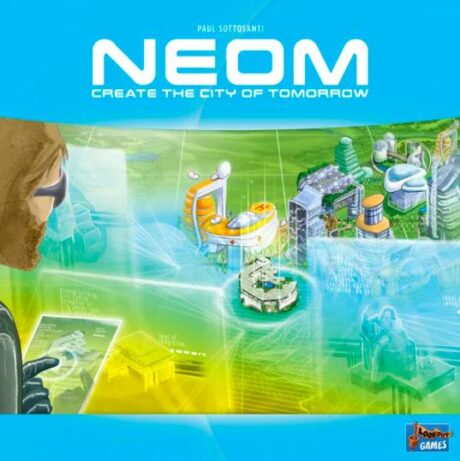

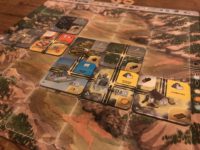
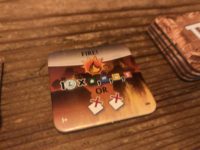
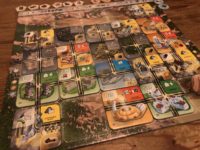
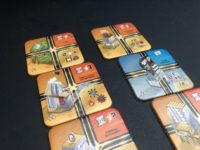
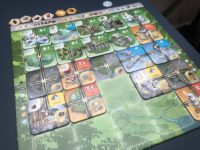
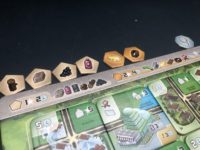


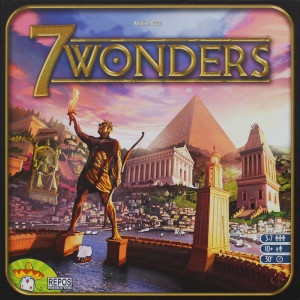
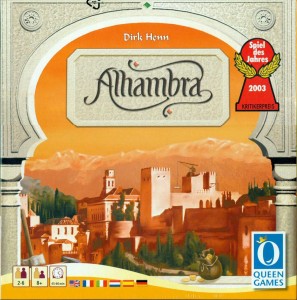
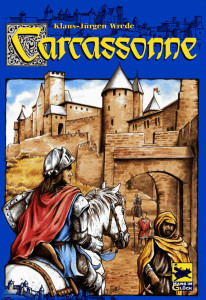
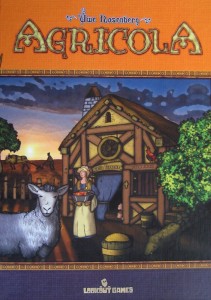
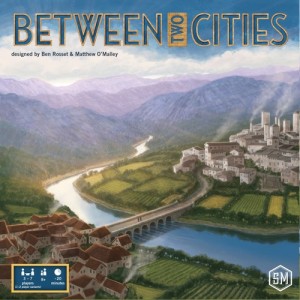
Sam says
I'll be honest, I knew going in that NEOM wore the influences of the game 7 Wonders on it's sleeve, and the older game is rightly regarded as a classic. Three ages (-or generations), seven cards (-or tiles) in each age, build a wonder (-or city) and buy resources from your neighbours as needed. What could this freshman do that meant I would play it over its predecessor? Well, as it turns out NEOM wears the influence of another older game (Alhambra) lightly too, but rather than a creaking Frankenstein's monster, designer Paul Sottosanti has crafted something really neat here - easier to teach than the more abstracted 7 Wonders, more tactically-engaging and turn-by-turn rewarding than Alhambra. 7 Wonders is really clever, but in it you're constructing a kind of stop-start flowchart of symbology. Here, you can actually see the city taking shape, and understand that as it grows of course roads need to connect, and of course the Univerisity, for instance, is best built near the residential areas, which in turn don't want to be next to the smoke-belching factories. Despite the heaving variety in the tiles, there's a miniature logic to each one. The tile language is simple: cost top left, rewards bottom-right. Some score points; that's always top-right. There's a guide to each tile in the back of the rulebook and while it does at first glance look like the spreadsheet from highlighter hell, each individual entry is very easy to follow - play the game 3 or 4 times and you'll barely need it anyway. NEOM surprised me, and was a nice reminder that games don't necessarily need a neon-glowing USP: the beating heart of them is a sense of play, and that's abundantly present here.